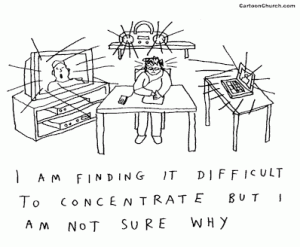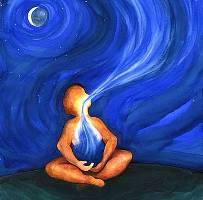The following are the five main general principles of all traditional yoga. As a holistic system, Ayurveda states that each aspect should be done in an individualized manner and according to the season and your current individual constitution (and/or imbalance) to avoid any aggravation of the “Doshas” (bodily humors that make up one’s constitution) and promote or restore health. Ayurveda and Yoga complement each other for an overall balanced and healthy lifestyle.
These Five Principles of Yoga are the basis of attaining a healthy body and mind through the Practice of Yoga.
The Five Principles:
Principle 1: Proper Relaxation
By releasing the tension in the muscles and putting the whole body at rest, you revitalize your Nervous System and achieve inner peace, making you feel relaxed and refreshed. This relaxed feeling is carried over into all your activities and helps you conserve your energy and let go of all worries and fears. Proper relaxation leaves you refreshed like after a good night’s sleep.
Principle 2: Proper Exercise
This principle revolves around the idea that our physical body is meant to move and exercise. Proper Exercise is achieved through the Yoga Postures or Asana which systematically works on all parts of the body – stretches and tones the Muscles and Ligaments, enhances the flexibility of the spine and the joints, and improves Blood Circulation. The asanas are designed to regulate the physical and physiological functions of the body. Practicing these Yoga Poses makes your body relaxed, gives you more strength and energy, and rejuvenates the various systems of the body. The Yoga Posture goes together with Proper Breathing. Each movement and stretch should be guided by your breath, making your movement and your breath coordinated; feeling like one and the same. The execution of the Asana is beneficial to the body, and at the same time contributes to spiritual and mental growth.
Principle 3: Proper Breathing
This means breathing fully and rhythmically, making use of all the parts of your lungs to increase your oxygen intake. Proper Breathing should be deep, slow and rhythmical. To achieve this, you need to be able to regulate the length and duration of your inhalation, exhalation, and the retention of air in your lungs or the pauses between breath. Yoga Breathing Exercises or Pranayama teaches you on how you can recharge your body and control your mental state by regulating the flow of Prana – the life force. This helps you achieve a calmer and more focused mind, and increases your energy level.
Principle 4: Proper Diet
What you eat extremely affects your mind. Improper diet results to mental inefficiency and blocks spiritual awareness. Proper Diet is one that nourishes both mind and body. It should be well balanced and based on natural foods. Proper Diet in Yoga also means eating in moderation and eating only when you are hungry. We sometimes tend to eat when we are upset, using food to fill the gap or the emptiness that we feel. Bad eating habits will cause our senses to be dull that we won’t even notice how much we eat or how it tastes and may result to diet related ailments like Obesity and Diabetes. Food should sustain our body. It should keep the body light and supple, the mind calm, and it should also help in keeping a strong immune system.
Principle 5: Positive Thinking and Meditation
The way we think highly affects our way of life. Practice keeping a positive outlook in life, this will facilitate in having a peaceful mind. Positive thinking and Meditation helps you remove negative thoughts and place your mind under perfect control.
* The first 4 yoga principles mentioned above will strongly support your meditation practice (the 5th principle) by providing you with the necessary tools to attain (and maintain) a healthy body and mind, calmness and peace, as well as discipline and inner strength.
 Samadhi is a Sanskrit word which is the state of consciousness induced by complete meditation, derived from the verbal roots “samā” (the state of total equilibrium) and “dhi” (of a detached intellect).
Samadhi is a Sanskrit word which is the state of consciousness induced by complete meditation, derived from the verbal roots “samā” (the state of total equilibrium) and “dhi” (of a detached intellect).
 Dhyana is a Sanskrit word which means to meditate, derived from the verbal root dhyai, Dhyana it is the most common designation for both the meditative state of consciousness and the yogic techniques by which it is attained.
Dhyana is a Sanskrit word which means to meditate, derived from the verbal root dhyai, Dhyana it is the most common designation for both the meditative state of consciousness and the yogic techniques by which it is attained. Dharana is a Sanskrit word which means immovable concentration of the mind (or that which gives stability”) from the root Dhar, which means to “bind together”, “to make stable”. Dharanais the willful act of concentration of the mind.
Dharana is a Sanskrit word which means immovable concentration of the mind (or that which gives stability”) from the root Dhar, which means to “bind together”, “to make stable”. Dharanais the willful act of concentration of the mind.


 By controlling the act of breathing the student can efficiently and effectively control the various motions in the body and the different nerve currents that are animating the body. When practiced properly, one can easily and quickly gain control over body and mind through Pranayama, developing character and consciously harmonizing the individual’s life with the cosmic or Divine life.
By controlling the act of breathing the student can efficiently and effectively control the various motions in the body and the different nerve currents that are animating the body. When practiced properly, one can easily and quickly gain control over body and mind through Pranayama, developing character and consciously harmonizing the individual’s life with the cosmic or Divine life.